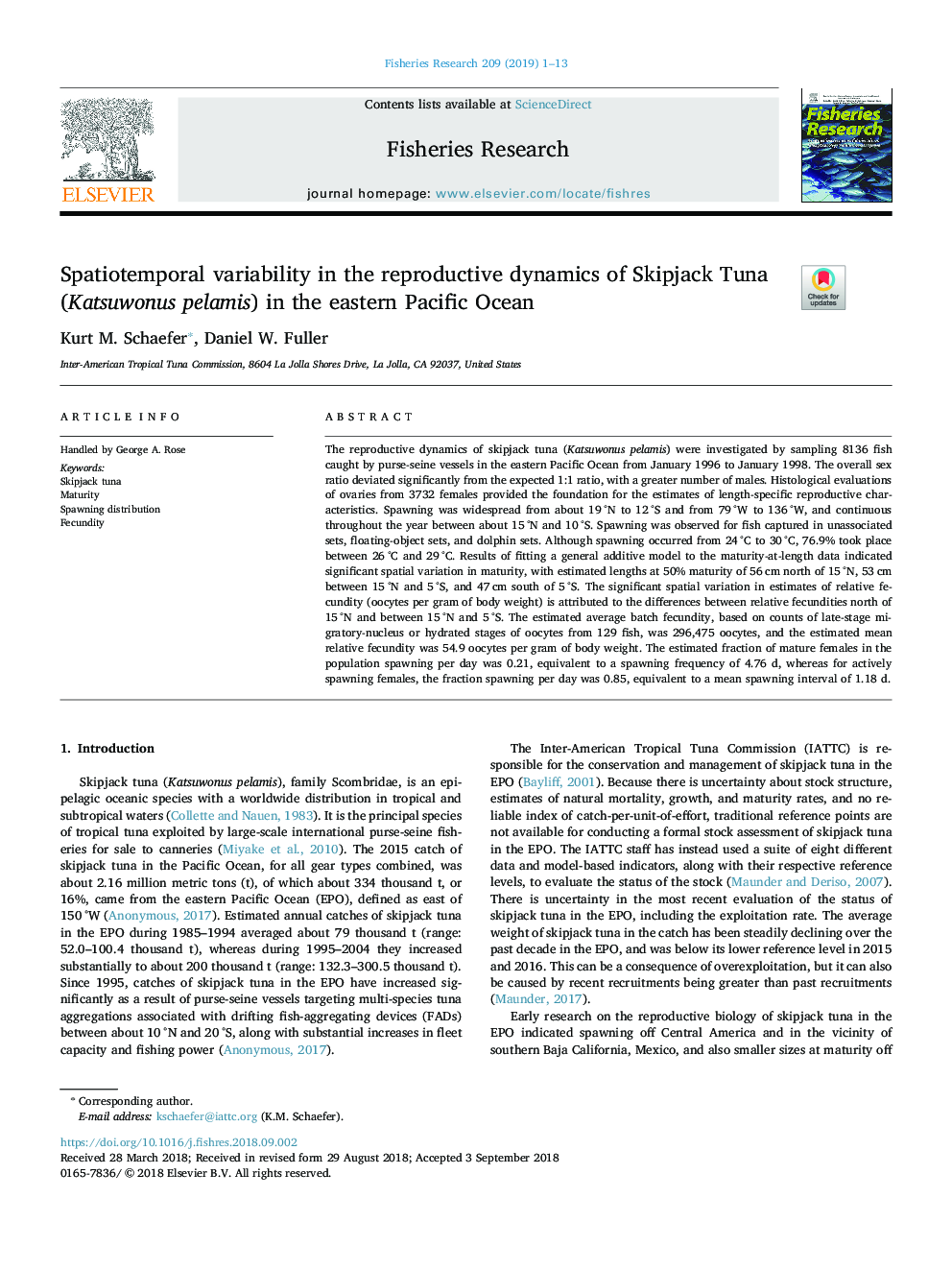| کد مقاله | کد نشریه | سال انتشار | مقاله انگلیسی | نسخه تمام متن |
|---|---|---|---|---|
| 10223852 | 1701060 | 2019 | 13 صفحه PDF | دانلود رایگان |
عنوان انگلیسی مقاله ISI
Spatiotemporal variability in the reproductive dynamics of Skipjack Tuna (Katsuwonus pelamis) in the eastern Pacific Ocean
دانلود مقاله + سفارش ترجمه
دانلود مقاله ISI انگلیسی
رایگان برای ایرانیان
موضوعات مرتبط
علوم زیستی و بیوفناوری
علوم کشاورزی و بیولوژیک
علوم آبزیان
پیش نمایش صفحه اول مقاله

چکیده انگلیسی
The reproductive dynamics of skipjack tuna (Katsuwonus pelamis) were investigated by sampling 8136 fish caught by purse-seine vessels in the eastern Pacific Ocean from January 1996 to January 1998. The overall sex ratio deviated significantly from the expected 1:1 ratio, with a greater number of males. Histological evaluations of ovaries from 3732 females provided the foundation for the estimates of length-specific reproductive characteristics. Spawning was widespread from about 19â°N to 12â°S and from 79â°W to 136â°W, and continuous throughout the year between about 15â°N and 10â°S. Spawning was observed for fish captured in unassociated sets, floating-object sets, and dolphin sets. Although spawning occurred from 24â°C to 30â°C, 76.9% took place between 26â°C and 29â°C. Results of fitting a general additive model to the maturity-at-length data indicated significant spatial variation in maturity, with estimated lengths at 50% maturity of 56âcm north of 15â°N, 53âcm between 15â°N and 5â°S, and 47âcm south of 5â°S. The significant spatial variation in estimates of relative fecundity (oocytes per gram of body weight) is attributed to the differences between relative fecundities north of 15â°N and between 15â°N and 5â°S. The estimated average batch fecundity, based on counts of late-stage migratory-nucleus or hydrated stages of oocytes from 129 fish, was 296,475 oocytes, and the estimated mean relative fecundity was 54.9 oocytes per gram of body weight. The estimated fraction of mature females in the population spawning per day was 0.21, equivalent to a spawning frequency of 4.76 d, whereas for actively spawning females, the fraction spawning per day was 0.85, equivalent to a mean spawning interval of 1.18 d.
ناشر
Database: Elsevier - ScienceDirect (ساینس دایرکت)
Journal: Fisheries Research - Volume 209, January 2019, Pages 1-13
Journal: Fisheries Research - Volume 209, January 2019, Pages 1-13
نویسندگان
Kurt M. Schaefer, Daniel W. Fuller,